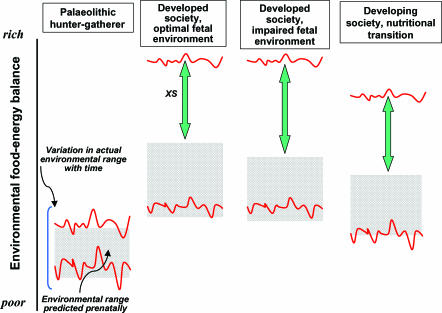Figure 1. Diagram to show a conceptual framework for the influence of predictive adaptive responses (PARs) under various food availability–energy expenditure conditions in the postnatal environment.
Red lines show the range of environmental conditions occurring over time. Stippled regions show the range for which mature individuals have maximal fitness as determined during early development by PARs. Those living in a food–energy environment outside their PARs range are at increased risk of ‘lifestyle’ disease such as metabolic syndrome. For a Palaeolithic hunter-gatherer society the level of food–energy balance is low and the range narrow, and this period of evolutionary adaptiveness ensured an approximate match between the physiology of the adult and the range of environments experienced. PARs allowed the individual to cope with the extremes of this range. The risk of disease such as metabolic syndrome was irrelevant given that low life expectancy resulted from other causes. In contemporary developed societies, the range of food–energy balance has moved upwards, especially at the upper limit. However, the intra-uterine environment remains relatively constrained due to the limits on maternal size. Therefore the persistent presence of PARs leaves the individual with a set of predictive adaptations mismatched with the actual environment faced and this leads to a gap between the upper limit of the range of optimal fitness and the environment actually faced. Such individuals are not well-adapted to live in this range and this confers increased risk of metabolic disorder with accompanying morbidity and mortality. The XS range is even larger following pregnancies with excessive constraint, due, for example, to unbalanced maternal diet or body composition, disease or placental insufficiency; under these conditions the PARs range shifts downwards and is narrower. The XS range is nearly as wide in developing societies undergoing economic transition, even if the food–energy balance has not yet reached the level of developed societies, because for many generations small maternal size and relatively poor nutrition have constrained the fetus and the processes of PARs have set the postnatal fitness range lower. Such societies are particularly at risk as the size of the food–energy transition increases further.

